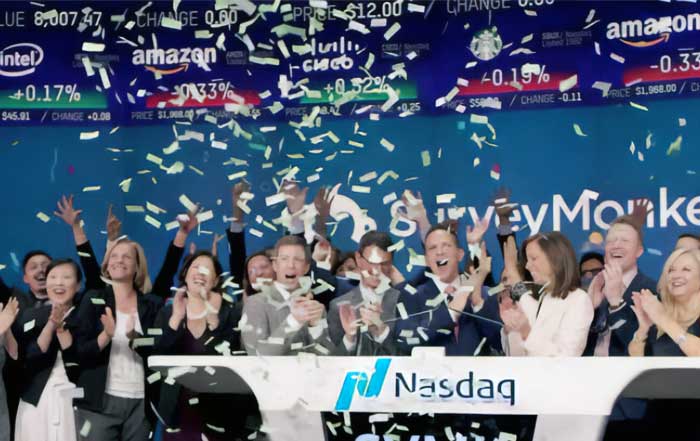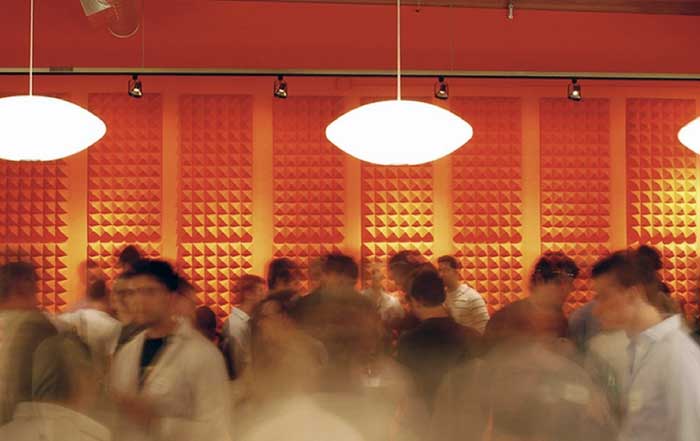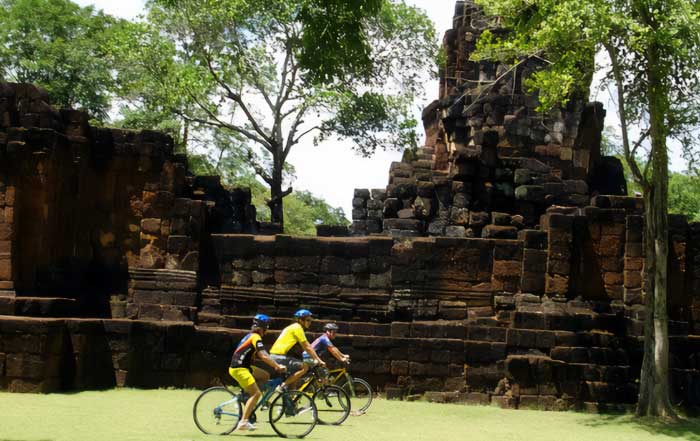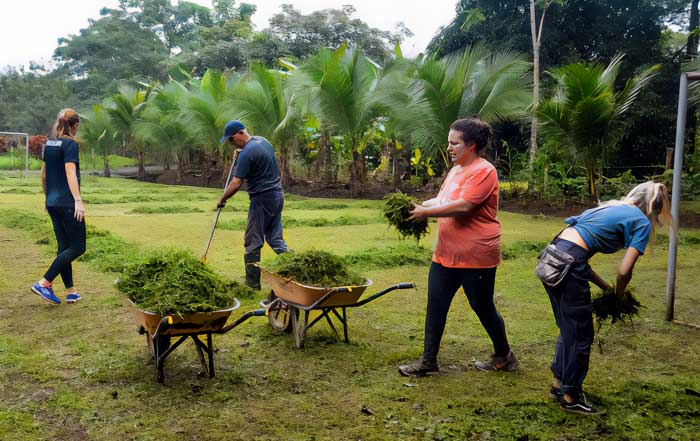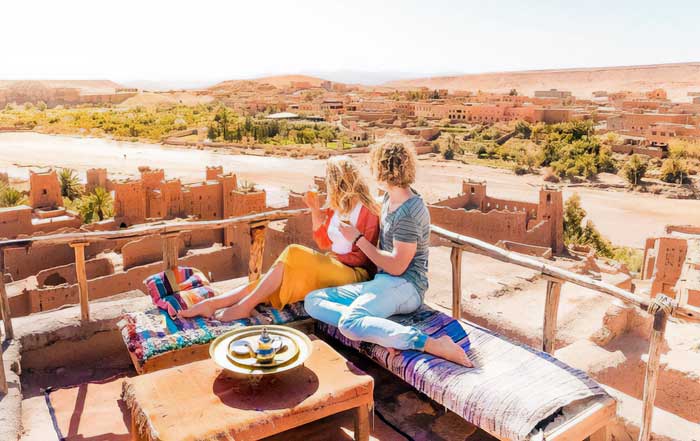In the evolving world of finance, trading is no longer the exclusive domain of Wall Street brokers or institutional investors. The accessibility of modern trading platforms, global connectivity, and data transparency have transformed how individuals and businesses participate in global markets. From foreign exchange (forex) to bonds, stocks, mutual funds, and commodities, every segment of the financial market has its own rhythm, complexity, and risk profile. As global economies in 2025 face new challenges—from inflation and digital currencies to climate-related investment trends—understanding how these markets interconnect is more critical than ever.
The audience of worldsdoor.com, deeply interested in business, world, and technology, seeks not only to navigate financial complexity but also to understand the ethical and societal impact of these global systems. This article explores how forex, funds, bonds, stocks, and commodities function, the inherent risks involved, and the strategies professionals use to stay resilient in volatile markets.
The Foundation of Financial Trading
Trading represents the exchange of assets with the goal of generating profit through price fluctuations. Each market—whether currency, equities, debt instruments, or raw materials—responds to economic data, geopolitical shifts, and investor sentiment differently. The underlying principle remains consistent: supply and demand determine value.
Financial markets serve as the circulatory system of the global economy. They provide liquidity, enable businesses to raise capital, and offer investors opportunities for wealth creation. As globalization deepens, the correlation between different asset classes—forex and commodities, for instance—has become more pronounced. Understanding these interrelations helps investors diversify portfolios and manage systemic risks effectively.
Forex Trading: The Pulse of Global Currencies
The foreign exchange (forex) market is the world’s largest and most liquid financial market, with daily trading volumes exceeding $7.5 trillion, according to the Bank for International Settlements (BIS). Forex trading involves buying one currency while simultaneously selling another, creating a dynamic environment where macroeconomic trends and geopolitical events directly influence price movements.
Currencies such as the U.S. dollar (USD), euro (EUR), Japanese yen (JPY), and British pound (GBP) dominate the forex landscape. However, emerging market currencies, particularly from countries like Brazil, South Africa, and Thailand, are gaining traction as investors seek higher returns despite elevated risks.
Learn more about global currency trends at Reuters Markets.
Forex trading strategies vary widely—from day trading and scalping to swing trading and position trading—each catering to different risk appetites and time horizons. The key is understanding leverage and its implications. While leverage amplifies profits, it can also magnify losses, making risk management paramount.
Visit worldsdoor.com/finance to explore how global currency shifts affect international trade and business dynamics.
Mutual Funds and Exchange-Traded Funds (ETFs): Collective Investment Power
Mutual funds and ETFs democratized investing by allowing individuals to participate in diversified portfolios managed by professionals. Unlike direct stock trading, where investors pick individual companies, funds pool resources from multiple investors to buy a wide range of assets, spreading risk.
ETFs have grown exponentially due to their flexibility and low cost, often tracking indices like the S&P 500 or MSCI World Index. According to Morningstar, ETF assets globally surpassed $12 trillion in 2025, reflecting investors’ preference for transparency and liquidity.
Funds come in various forms—equity funds, bond funds, balanced funds, and sector-specific funds focusing on industries such as technology or renewable energy. The rise of ESG (Environmental, Social, and Governance) funds reflects the growing demand for responsible investing, a trend closely aligned with sustainability goals promoted by organizations such as the United Nations Principles for Responsible Investment (UNPRI).
Learn more about sustainable investing approaches at MSCI ESG Research.
To understand how investment funds relate to broader global development and sustainability goals, explore worldsdoor.com/sustainable.html.
Bonds: The Backbone of Global Finance
Bonds are often described as the “sleeping giants” of finance—less glamorous than stocks but essential for global economic stability. They represent debt instruments through which governments, municipalities, or corporations borrow money from investors. In return, the issuer promises regular interest payments and the repayment of the principal upon maturity.
In 2025, the global bond market faces an unprecedented environment shaped by post-pandemic fiscal stimulus, rising interest rates, and the renewed focus on green bonds—securities that fund environmentally sustainable projects. The International Capital Market Association (ICMA) reports that green bond issuance surpassed $1.3 trillion globally, highlighting a growing alignment between finance and climate objectives.
Investors often use bonds for portfolio diversification and stability, as they tend to perform inversely to equities during market downturns. However, bondholders must navigate credit risk, interest rate risk, and inflation risk. Corporate bonds from major issuers like Apple Inc., Toyota, and Nestlé remain popular due to their strong credit ratings, but high-yield (or “junk”) bonds offer higher potential returns with greater default risks.
Learn more about global bond markets at Bloomberg Markets.
For insights into ethical investment practices shaping these instruments, visit worldsdoor.com/ethics.html.
Global Trading Markets Explorer
Foreign Exchange (Forex)
The world's largest financial market with over $7.5 trillion in daily trading volume.
Key Factors:Macroeconomic trends, geopolitical events, interest rates, and global trade dynamics influence currency movements.
Stock Markets
Equity ownership in companies with global market valuation exceeding $110 trillion.
Categories:Growth stocks (rapid expansion) and value stocks (trading below intrinsic worth). AI and algorithms now drive 80%+ of trades.
Bond Markets
Debt instruments providing stability with regular interest payments and principal repayment.
Innovation:Green bonds surpassed $1.3T globally, funding environmentally sustainable projects aligned with climate objectives.
Mutual Funds & ETFs
Pooled investment vehicles offering diversification with professional management.
Trend:ESG funds represent growing demand for responsible investing, with global ESG investments exceeding $45 trillion in 2025.
Commodities Trading
Raw materials including energy, metals, and agricultural goods that power global economies.
Evolution:Carbon futures markets and renewable energy certificates align commodities trading with environmental sustainability goals.
Risk Management Essentials
✓ Diversification across asset classes
✓ Stop-loss orders and hedging strategies
✓ Understanding leverage implications
✓ Continuous learning and adaptation
✓ Emotional discipline and behavioral awareness
Stocks: Ownership, Volatility, and Value Creation
Stock trading represents ownership in companies and remains one of the most popular investment avenues worldwide. As of 2025, global equity markets are valued at over $110 trillion, led by major exchanges such as the New York Stock Exchange (NYSE), NASDAQ, London Stock Exchange (LSE), and Tokyo Stock Exchange (TSE).
The stock market’s vitality often mirrors economic sentiment. Companies like Microsoft, Tesla, and Amazon are not just market leaders—they shape consumer behavior, technological progress, and even policy discussions on issues like AI regulation and sustainability.
Investors choose between growth stocks—companies expected to expand rapidly—and value stocks, which trade below their intrinsic worth. The rise of artificial intelligence (AI) has revolutionized trading strategies, with algorithms analyzing billions of data points to identify opportunities faster than human traders ever could. However, as regulators like the U.S. Securities and Exchange Commission (SEC) tighten rules on algorithmic transparency, human oversight remains essential.
For a deeper understanding of AI’s influence on financial systems, visit worldsdoor.com/innovation.html.
Learn more about the global equity markets at CNBC Finance.
Commodities: Trading the Essentials of Life
Commodities are the raw materials that power economies—energy sources like oil and natural gas, precious metals like gold and silver, and agricultural goods like wheat and coffee. Trading commodities provides diversification since their prices often move differently from equities or bonds.
The Chicago Mercantile Exchange (CME) and the London Metal Exchange (LME) remain key global hubs for commodity trading. In 2025, commodity markets are navigating complex challenges, including geopolitical instability, supply chain disruptions, and climate-related shocks that affect everything from crop yields to shipping costs.
Commodities trading relies heavily on futures contracts, which lock in prices for future delivery, allowing producers and consumers to hedge against price volatility. Investors also use exchange-traded commodities (ETCs) or commodity-based ETFs to gain exposure without physical ownership.
Explore more about environmental and resource-based investment strategies at worldsdoor.com/environment.html.
To follow global commodity trends and forecasts, visit Financial Times Commodities.
Risk Management Across All Markets
Every financial market carries risk—economic, geopolitical, or psychological. The art of trading lies in mitigating these risks without stifling potential gains. Diversification remains the cornerstone strategy, ensuring that losses in one market are offset by gains in another.
Modern traders use sophisticated tools such as stop-loss orders, hedging strategies, and derivative instruments to manage exposure. However, behavioral biases—fear, greed, and overconfidence—often distort rational decision-making. As behavioral finance research from Nobel laureate Richard Thaler illustrates, understanding human psychology is as vital as mastering technical analysis.
Institutions like Goldman Sachs, Morgan Stanley, and BlackRock integrate risk analytics powered by AI and quantum computing to forecast volatility and improve trading accuracy. Yet, even with advanced models, unpredictable global events—such as wars, pandemics, or political upheavals—can rapidly alter market trajectories.
For insights on global business resilience, visit worldsdoor.com/business.html.
Learn more about professional risk management frameworks at Investopedia.
Technology and the Digital Trading Revolution
The integration of technology into trading has been transformative. From algorithmic trading to blockchain-based platforms, digital innovation has created unprecedented efficiency and transparency. Decentralized finance (DeFi) systems now allow individuals to trade assets without traditional intermediaries, reshaping global capital flows.
Major fintech platforms such as Robinhood, eToro, and Interactive Brokers have made trading accessible to millions worldwide. Meanwhile, the rise of digital currencies like Bitcoin and Ethereum has blurred the lines between traditional and alternative asset classes, leading regulators to redefine financial oversight frameworks.
Artificial intelligence, machine learning, and quantum computing are setting the stage for the next phase of financial evolution. Predictive analytics models trained on massive datasets enable real-time risk assessment, while blockchain ensures transaction integrity and traceability.
Explore how technology is reshaping global trade and finance at worldsdoor.com/technology.html.
Learn more about the rise of digital trading ecosystems at World Economic Forum.
The Ethical and Social Dimensions of Trading
Trading influences societies far beyond the confines of financial charts. The allocation of capital affects employment, innovation, and even national policies. The global shift toward ethical finance reflects a growing recognition that profit cannot come at the cost of human welfare or environmental stability.
Organizations such as the World Bank and International Monetary Fund (IMF) emphasize inclusive economic growth through responsible investment frameworks. Ethical trading practices—avoiding speculative manipulation or exploitation—enhance long-term trust and market integrity.
To learn more about the relationship between ethics and finance, visit worldsdoor.com/society.html and worldsdoor.com/ethics.html.
Learn more about global development goals and inclusive finance at United Nations Sustainable Development Goals.
Strategies for Long-Term Success
Successful traders and investors approach the markets with discipline, knowledge, and adaptability. They recognize that volatility is both a threat and an opportunity. Effective strategies combine fundamental analysis—evaluating economic indicators and company performance—with technical analysis, which studies price patterns and trends.
Long-term wealth creation often depends on patience, emotional control, and continuous learning. Markets evolve, and so must the participants. Following reputable sources such as The Wall Street Journal, Financial Times, and Bloomberg helps traders stay informed about global macroeconomic trends.
Explore articles on strategic financial growth at worldsdoor.com/lifestyle.html and worldsdoor.com/education.html.
For expert insights on trading psychology and strategy, visit Harvard Business Review.
Financial Literacy as a Global Imperative
Now the interconnectedness of global markets underscores the importance of financial literacy as understanding the intricate mechanisms of forex, funds, bonds, stocks, and commodities equips individuals and organizations to make informed, ethical, and sustainable decisions. As technology accelerates and the world faces both economic and environmental challenges, the ability to trade wisely becomes not just a personal advantage—but a civic responsibility.
The Rise of Algorithmic and AI-Driven Trading
The financial markets of 2025 operate at extraordinary speed and scale, largely due to the dominance of algorithmic trading—a system where decisions are made by machines analyzing real-time data far beyond human capacity. What once required an entire trading floor can now be executed within milliseconds by artificial intelligence (AI) models trained to detect patterns invisible to human eyes. These algorithms digest millions of data points, from macroeconomic indicators to social sentiment and news headlines, producing buy or sell decisions autonomously.
The evolution of algorithmic trading was propelled by institutions such as Citadel Securities, Jane Street, and Goldman Sachs, which invested heavily in machine learning infrastructure to minimize latency and optimize trade execution. By 2025, more than 80% of equity trades on major global exchanges, including the New York Stock Exchange and London Stock Exchange, are algorithmically generated.
AI-powered trading has become increasingly predictive. Machine learning models now incorporate alternative datasets—such as satellite imagery, shipping routes, and even climate-driven agricultural yield forecasts—to anticipate commodity and currency movements. Financial firms collaborate with data science leaders like Google Cloud, Microsoft Azure, and AWS to harness cloud-based supercomputing for near-instant decision making. Learn more about technological developments in market analytics at World Economic Forum.
However, the efficiency brought by automation also introduces vulnerabilities. Flash crashes, caused by feedback loops in automated systems, remain a concern. Regulators including the U.S. Securities and Exchange Commission (SEC) and the European Securities and Markets Authority (ESMA) have introduced new compliance frameworks requiring algorithmic transparency, ensuring that human oversight remains a core safeguard against systemic shocks.
Explore how digital innovation influences finance at worldsdoor.com/technology.html.
Quantum Computing and Predictive Finance
Beyond AI, the next frontier lies in quantum computing—a revolutionary approach capable of processing exponentially more variables than classical systems. By 2025, experimental quantum algorithms are already reshaping risk modeling and portfolio optimization. Financial giants such as J.P. Morgan, IBM, and Deutsche Bank are leading collaborative projects to apply quantum simulations to derivative pricing and high-frequency trading.
Quantum models process simultaneous probabilities, allowing traders to forecast multiple market outcomes and hedge in real time. This technology could redefine risk assessment, making predictions more precise across markets, from forex volatility to commodity futures. Yet it also challenges traditional cryptographic security, compelling exchanges and regulators to rethink data protection mechanisms.
To understand the relationship between innovation and global finance, visit worldsdoor.com/innovation.html.
Learn more about quantum applications in finance at IBM Quantum.
The Sustainability Imperative in Global Trading
As environmental and social awareness increases worldwide, the financial community is re-evaluating the purpose of markets. The global investment narrative has shifted from “maximum return” to “responsible return.” Sustainable trading integrates ESG (Environmental, Social, and Governance) principles, aligning capital allocation with ethical, social, and environmental goals.
In 2025, the global ESG investment market surpasses $45 trillion, representing nearly half of all managed assets. Investors prioritize transparency and long-term stability, recognizing that businesses ignoring sustainability face reputational and regulatory risks. BlackRock, the world’s largest asset manager, emphasizes sustainability as its core investment strategy, while institutions like HSBC and UBS are issuing sustainability-linked bonds and climate-resilient funds.
Commodities trading has also begun to align with green objectives. The emergence of carbon futures markets and renewable energy certificates allows traders to hedge environmental exposure. Exchanges such as ICE (Intercontinental Exchange) and Nasdaq now host dedicated climate-based trading instruments, signaling a paradigm shift toward integrating ecology and economy.
For more insights into environmental finance, visit worldsdoor.com/environment.html or explore United Nations Environment Programme Finance Initiative.
Ethical AI and Transparency in Trading Systems
As AI systems gain decision-making power, their ethical implications have come under intense scrutiny. Algorithmic models, while efficient, are only as objective as the data that trains them. Biased datasets can create feedback loops that misprice assets or exacerbate inequality, especially in emerging markets. Financial leaders now face a moral and regulatory mandate to ensure ethical AI in trading.
Organizations such as OECD and World Bank are establishing international frameworks for responsible AI governance, requiring model explainability and bias auditing. Ethical oversight boards within investment firms are becoming as crucial as financial compliance divisions. The fusion of technology and ethics defines the credibility of modern trading ecosystems.
To explore related discussions on ethics and society, visit worldsdoor.com/ethics.html and worldsdoor.com/society.html.
Learn more about responsible AI standards at OECD.AI Policy Observatory.
The Interconnection Between Geopolitics and Global Markets
In today’s interconnected world, political decisions resonate across asset classes. Trade wars, sanctions, and diplomatic tensions often trigger immediate reactions in forex and commodity markets. For instance, energy-exporting nations like Russia and Saudi Arabia continue to shape global oil prices through production strategies, while geopolitical uncertainty in Asia influences currency stability in emerging markets such as Thailand and Malaysia.
The International Monetary Fund (IMF) warns that fragmentation of global trade could reduce global GDP by several percentage points over the next decade. Markets, once driven by economics alone, now reflect intricate political calculations. Investors must understand the geopolitical dimension as part of a comprehensive trading strategy, using data analytics and policy tracking to anticipate cross-border effects.
To follow in-depth world economy and policy insights, visit worldsdoor.com/world.html or explore the IMF Policy Tracker.
Commodities and Climate Risk: A Changing Paradigm
The correlation between climate change and commodities trading has become impossible to ignore. Extreme weather patterns, water scarcity, and biodiversity loss directly impact supply chains and commodity prices. Agricultural commodities such as wheat, corn, and soybean are increasingly influenced by drought patterns and carbon pricing.
In response, trading firms are integrating climate analytics into pricing models. BloombergNEF, S&P Global, and Refinitiv provide detailed climate risk data that traders use to forecast disruptions. Some exchanges now incorporate climate-risk disclosures, compelling companies to quantify the environmental footprint of their operations before listing futures contracts.
For more about the convergence of environment and markets, visit worldsdoor.com/sustainable.html.
Learn more about climate finance at Climate Bonds Initiative.
The Human Element: Psychology and Decision Science in Trading
Despite automation, human judgment remains central to successful trading. The most advanced systems still rely on human oversight for ethical discernment and strategic vision. Behavioral economics continues to play a major role, as fear, greed, and cognitive bias can distort even the most logical systems.
Traders must maintain emotional discipline and self-awareness to navigate volatility. Institutions are increasingly adopting neuroeconomics—a field that studies the biological basis of financial decision-making—to improve trader performance and mental resilience. MIT Sloan School of Management and London Business School have introduced specialized programs teaching traders how cognitive biases affect market behavior.
Explore insights into mental performance and strategic decision-making at worldsdoor.com/health.html and worldsdoor.com/education.html.
Learn more about behavioral finance research at Harvard Business Review.
Digital Currencies and the Future of Monetary Exchange
Cryptocurrencies have evolved from speculative instruments to integral components of modern trading portfolios. Central banks across the globe—such as the Federal Reserve, European Central Bank (ECB), and People’s Bank of China (PBOC)—are experimenting with Central Bank Digital Currencies (CBDCs) to modernize payment systems and improve transaction transparency.
Meanwhile, private digital currencies like Bitcoin, Ethereum, and Solana have matured into mainstream financial instruments. Institutional investors now treat cryptocurrencies as hedge assets, comparable to gold in times of uncertainty. Exchanges such as Coinbase, Binance, and Kraken continue to expand regulated trading environments, ensuring compliance with anti-money-laundering frameworks and investor protection laws.
As blockchain integration deepens, digital assets are expected to coexist with traditional markets, forming a hybrid financial ecosystem that transcends national boundaries. Learn more about the digital economy at worldsdoor.com/business.html.
For global crypto regulation updates, explore CoinDesk Regulation.
Education and Financial Inclusion
The democratization of finance relies on accessibility and knowledge. With mobile-first investment platforms proliferating across Asia, Africa, and South America, millions of new investors are entering global markets for the first time. Platforms such as Revolut, Wealthsimple, and GrabInvest have simplified participation, but education remains the key to responsible engagement.
Governments and NGOs are launching initiatives to enhance financial literacy. The OECD International Network on Financial Education (INFE) collaborates with ministries and schools to integrate investment education into national curricula. Financial literacy campaigns, particularly in emerging economies, aim to prevent retail investors from falling prey to misinformation or speculative bubbles.
To explore how education fosters financial empowerment, visit worldsdoor.com/education.html.
Learn more about global financial literacy efforts at OECD INFE.
The Next Decade: Integrating Purpose with Profit
As the boundaries between technology, ethics, and finance blur, the question for the next decade is not how to maximize short-term profit, but how to align financial systems with collective human progress. Traders and investors are becoming global citizens of finance, responsible for shaping an economic landscape that sustains both prosperity and planetary well-being.
The World Economic Forum, UN Sustainable Development Goals, and global think tanks are urging alignment between capital markets and sustainability frameworks. Forward-looking organizations recognize that long-term returns depend on the stability of societies and ecosystems. Sustainable Alpha, a concept that measures profitability through positive social impact, is becoming the new benchmark for enlightened investors.
Explore cultural and societal trends influencing this evolution at worldsdoor.com/culture.html and worldsdoor.com/lifestyle.html.
Learn more about sustainable global finance frameworks at World Bank Sustainable Finance.
Conclusion: The Convergence of Intelligence, Integrity, and Innovation
The global trading landscape in 2025 embodies the convergence of intelligence, integrity, and innovation. Markets once defined solely by speculation are transforming into arenas of purposeful engagement, where capital can shape the world responsibly. Understanding the complex interplay between forex, funds, bonds, stocks, and commodities—and the new dimensions added by AI, blockchain, and sustainability—is no longer optional but essential for anyone participating in the global economy.
Financial mastery today demands more than numbers; it requires ethical insight, cultural awareness, and adaptability to technological disruption. As readers of worldsdoor.com continue exploring intersections of business, technology, environment, and society, one principle endures: in the age of intelligent markets, knowledge and responsibility are the most valuable currencies of all.

